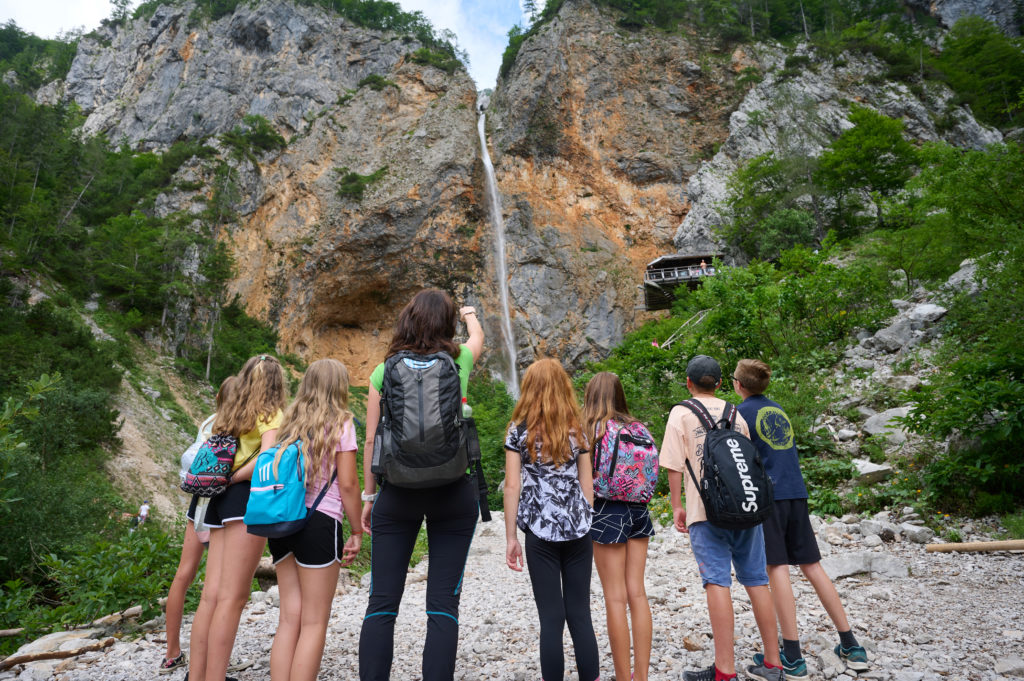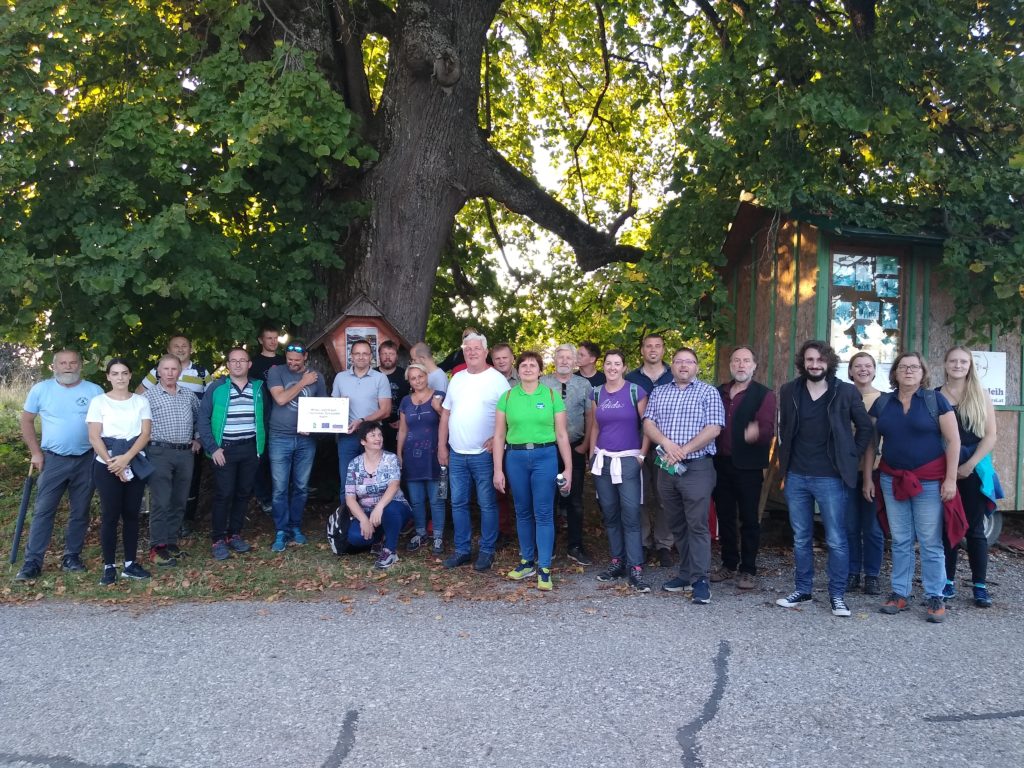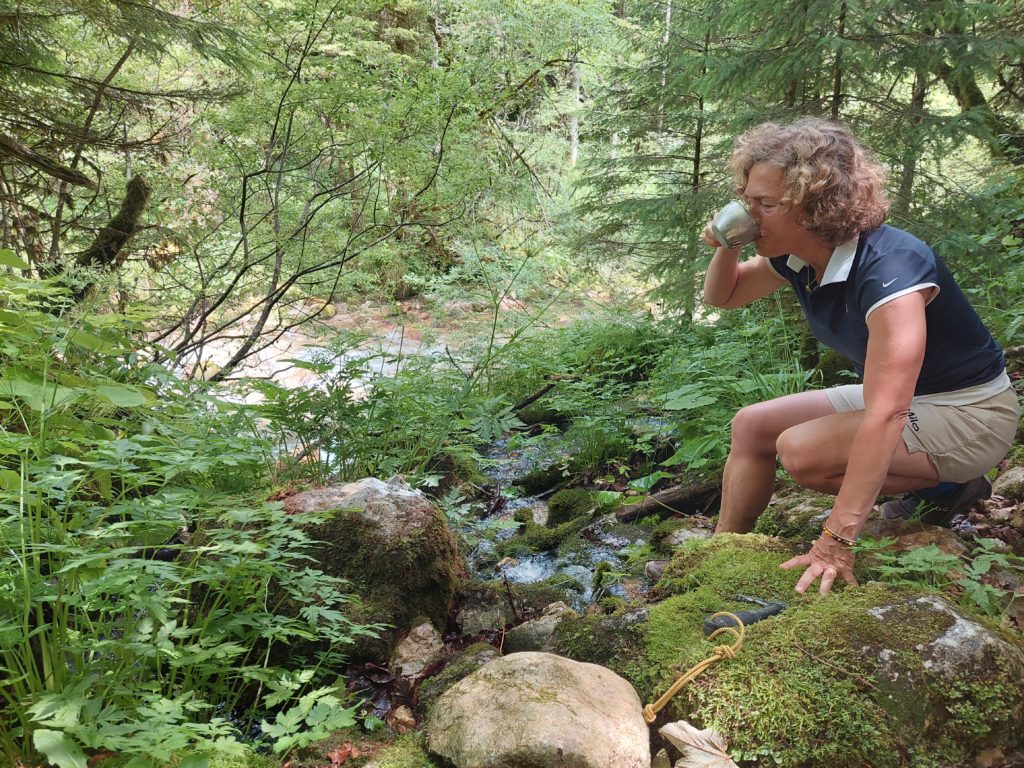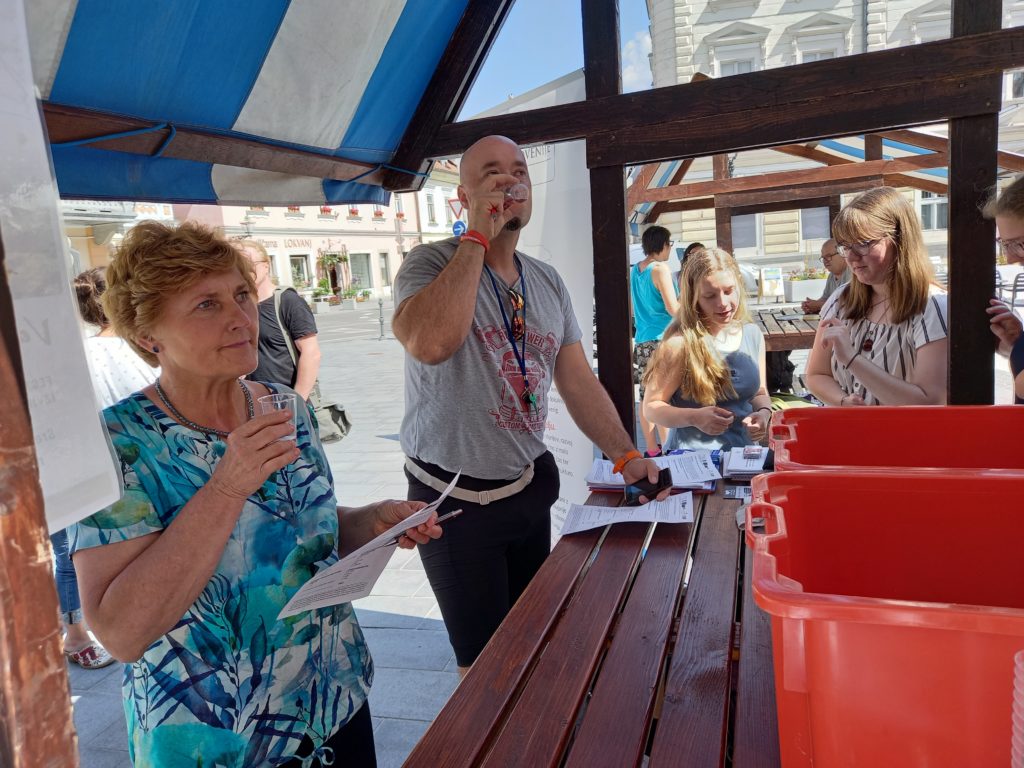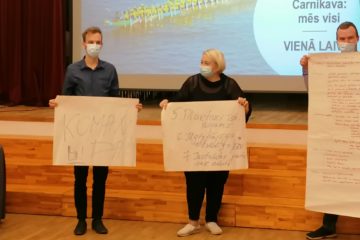The Network of Waterways in the Kamnik-Savinja Alps
Project n°18
INTRODUCTION
The Network of Waterways in the Kamnik-Savinja Alps is a cooperation project between Slovenian and Austrian LAGs, dedicated to raise awareness about the critical importance of conserving drinking water and preserving natural resources across the cross-border area of Kamnik-Savinja Alps (KSA).
At the heart of the initiative was the creation of a 190-kilometre water-themed hiking trail, divided into 11 stages, which guides adventurers past four rivers, three lakes, over 100 springs, 100 streams, and several waterfalls. The project conducted in-depth analyses of 54 springs across the KSA, highlighting the importance of water preservation. Community engagement played a key role, with 10 drinking water festivals organized and 2 student contests to educate the younger generation. Additionally, experience exchanges, workshops, and training sessions for water sommeliers helped spread good practices and foster collaboration between LAGs across borders.
The trail is now featured in the Mountaineering Association of Slovenia’s app and on the Kamnik-Savinja Alps website, making it accessible to a wider audience while promoting sustainable tourism and environmental preservation.
PRESENTATION OF THE PROJECT
The basic development potential of the Kamnik-Savinja Alps (KSA) is in abundant water resources and pristine nature. The partners cooperated in order to raise awareness about the importance of water as a natural resource and the need to preserve its quality to ensure the long-term development of sustainable tourism. We educated locals about the necessity of safeguarding this valuable asset and preventing irresponsible pollution of river sources. By showcasing the region’s rich water resources to visitors, we want to integrate high-quality springs into a network of water routes – a long walking trail, offering a unique tourism product where visitors can enjoy pure spring water. Additionally, water quality monitoring is regularly conducted at these springs to maintain their pristine condition.
The project has made a significant impact in the KSA region by effectively addressing key environmental and community concerns through a collaborative approach. Key activities included:
• Water quality monitoring: Analysis of 54 springs in the KSA area and additional 15 the surrounding areas, with water quality data accessible via QR codes on metal pots placed near the springs. This has not only provided crucial data on water quality in KSA but has also underscored the importance of preserving these vital resources for the future.
• Water hiking route in KSA: Establishment of the 190-kilometre water route, with goal to heighten awareness of water conservation and promote sustainable tourism. Metal pots were placed next to the springs with drinking water, and the quality of the water in the various springs could be checked via a QR code on the pot. The trail is presented in the Mountaineering Association of Slovenia’s app, on the Kamnik-Savinja Alps website, and there is also a printed map in several languages available in the local Tourism Information Centres.
• Community engagement: The activities were equally distributed among the over 12 stakeholders, primarily local municipalities but also and associations from the region. 10 drinking water festivals were organized, along with 2 contests for elementary school students focused on art, comics, and literature. These activities aimed to raise awareness about the importance of preserving drinking water and fostering a positive attitude towards this vital resource.
• Educational initiatives: The project included professional excursions for knowledge exchange, water tester training, and workshops on the relationship between people and water. Round-table discussions and themed events further highlighted the healing properties of water. Education and training events were also organised for people interested in becoming water sommeliers.
• Tourism development: The project promoted sustainable tourism by designing and testing new holistic tourist products (long distance walking water trail), also water-related events and educational films were implemented. Renovations and new installations, such as drinking fountain in Luče, were also part of the project.
PRINCIPAL OBJECTIVES
The project had several key objectives, primarily focused on the preservation of clean drinking water in the KSA region. The main aims were twofold: first, to raise awareness about the rich water resources of the KSA and the importance of their conservation; and second, to create green jobs in the area, such as local guides and water sommeliers, thereby promoting sustainable regional development.
Another important objective was to ensure full stakeholder participation in the project’s activities, fostering interconnectivity and regional cooperation. This included revitalizing dormant projects that aligned with the initiative’s goals and encouraging collaboration among municipalities, organizations, and residents.
The project engaged local communities through various activities, such as drinking water festivals, student contests, and educational workshops. These events not only raised awareness about the vulnerability of water resources but also instilled a collective sense of responsibility towards environmental conservation.
The project successfully preserved and improved the quality of 54 springs within the waterway network, contributing to the biotic and landscape diversity of the KSA area. Additionally, it diversified tourism by sustainably linking water sources with the region’s natural and cultural heritage. To support these efforts, promotional materials, including a map in 3 languages, were distributed in local tourist centres.
ADDED VALUE OF THE PROJECT
The project excelled in its approach to partnership quality by actively promoting stakeholder participation and fostering interconnectivity across the whole KSA region. Through LAGs the project engaged over 12 diverse stakeholders, including municipalities and local associations, has facilitated widespread participation and cooperation, leading to tangible improvements in local environmental and tourism practices. This comprehensive involvement ensured that the project was executed consistently and equitably throughout the entire KSA region. By working collaboratively, partners achieved shared outcomes in their respective areas of the KSA, creating a solid foundation for future efforts.
The cross-border collaboration has ensured that project activities were implemented equitably across the entire KSA region. The LEADER methodology, with its emphasis on bottom-up decision-making and local involvement, has empowered municipalities and local groups to take ownership of the project. This participatory model has led to more effective solutions, as local stakeholders were able to contribute their knowledge and address specific common needs. The engagement of various LAGs and their associated municipalities has built strong networks and relationships between local communities, organizations, and authorities. The collaborative efforts in organizing events and sharing best practices have enhanced community cohesion.
The project focused on local needs, participatory methods, and cross-border collaboration. The project’s success in implementing a comprehensive water trail and engaging a broad spectrum of stakeholders demonstrates the effectiveness of the LEADER model in achieving meaningful and sustainable outcomes. A bottom-up approach, involving municipalities in all stages of the project, proved highly effective. Their input was crucial in shaping and implementing activities. By focusing on local involvement, sustainable development, partnerships, innovation, and capacity building, the project not only meets LEADER’s core criteria but also effectively supports the long-term development and resilience of the region of Kamnik-Savinja Alps.
The project’s strong foundation in community engagement, education, and local economic benefits, combined with opportunities for expansion and the implementation of strategies, suggests that it has significant potential for long-term sustainability and viability. By continuing to adapt and integrate the project into local and regional frameworks, it can remain a valuable resource and continue to provide benefits well into the future. Preserving a natural drinking water in Alp is for the partners a temporary mission, beyond the project. The initiatives did not finish with the project but are ongoing. In the next cooperation knowledge will be shared with a new international partner.
The project has had a significant transnational impact by promoting natural preservation, mutual learning and skills transfer between Slovenia and Austria. Through cross-border collaboration, experience exchange, and capacity building, it has enriched the knowledge and practices of stakeholders from both countries. The collaboration enabled the sharing of innovative approaches and solutions related to water conservation and sustainable tourism. The project organized professional excursions that allowed participants to exchange experiences and learn from each other.
